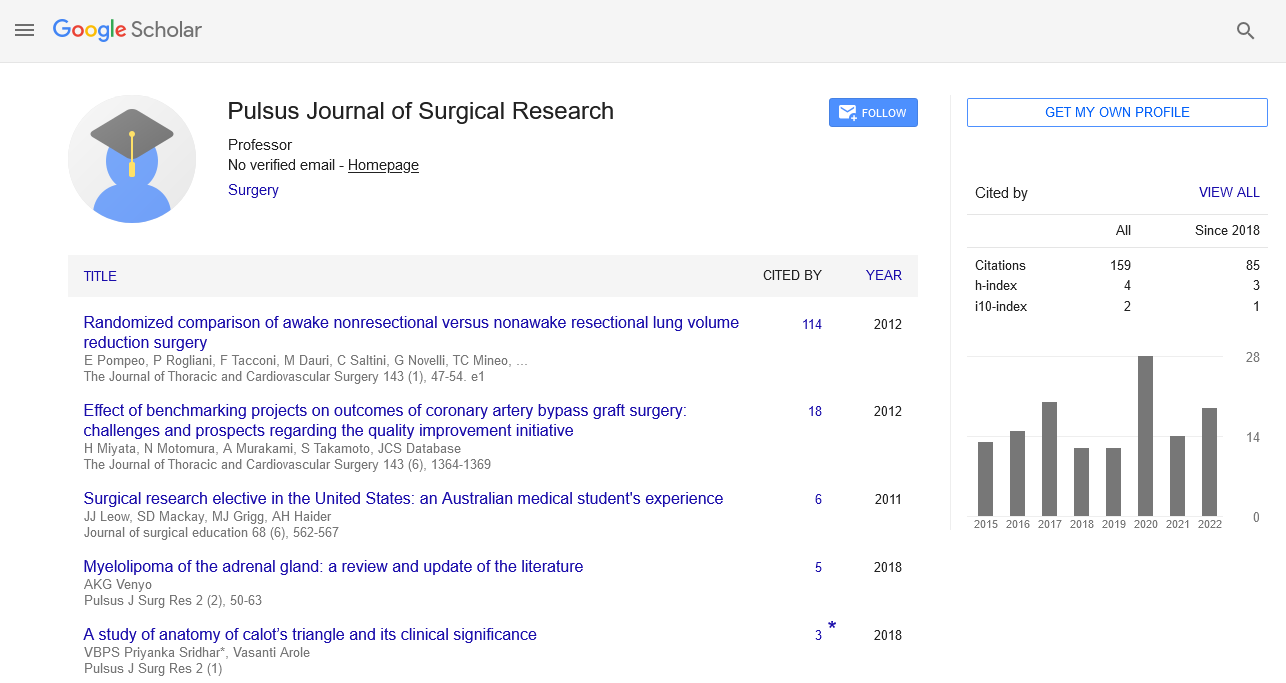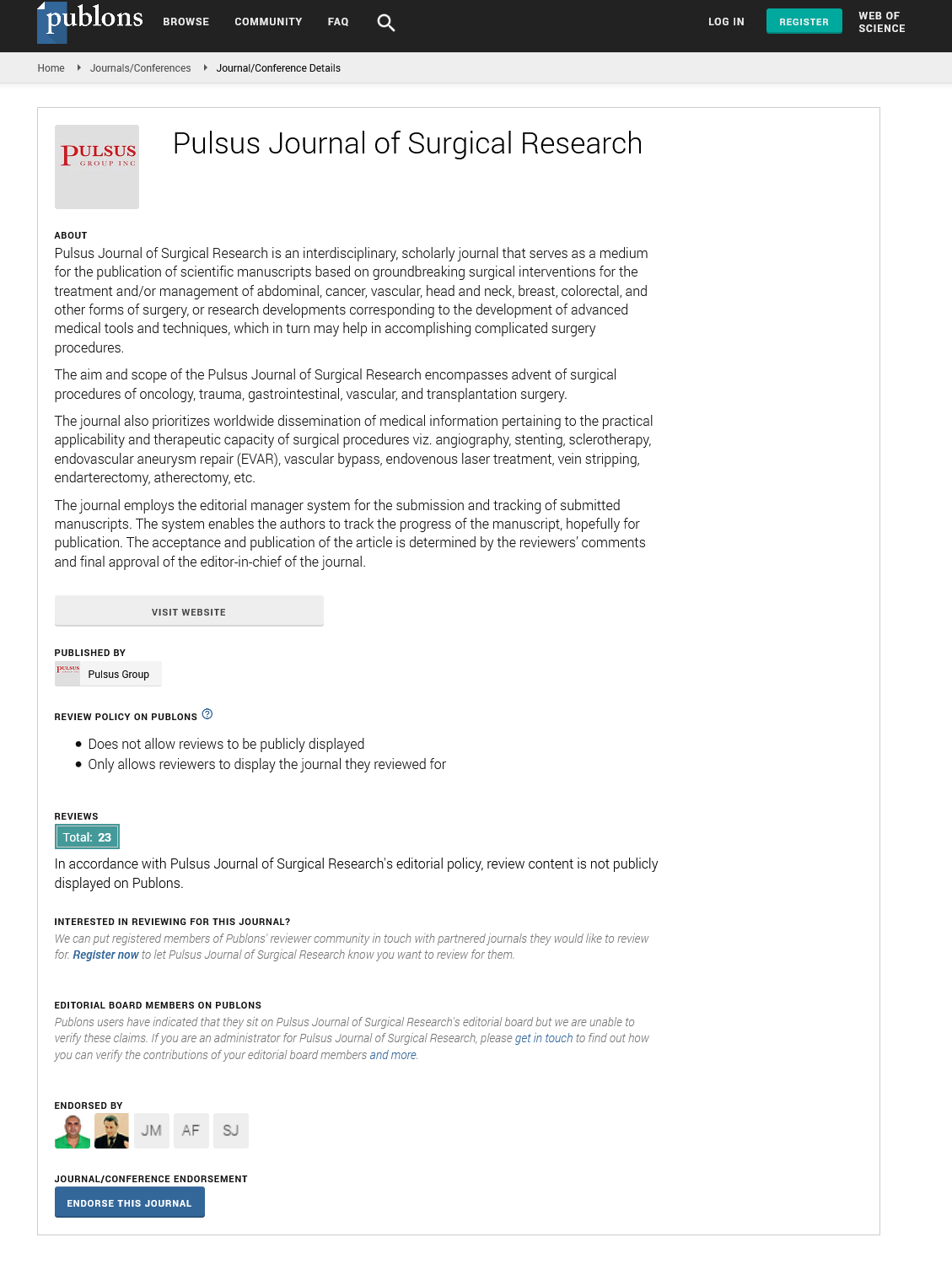Anthropometrically correct traditional brachioplasty in females: a novel technique
Received: 26-Jul-2019 Accepted Date: Aug 09, 2019; Published: 17-Aug-2019
Citation: .Ahmed Abdelmoez. Anthropometrically correct traditional brachioplasty in females: a novel technique. Pulsus J Surg Res. 2019;3(1):94-97.
This open-access article is distributed under the terms of the Creative Commons Attribution Non-Commercial License (CC BY-NC) (http://creativecommons.org/licenses/by-nc/4.0/), which permits reuse, distribution and reproduction of the article, provided that the original work is properly cited and the reuse is restricted to noncommercial purposes. For commercial reuse, contact reprints@pulsus.com
Abstract
Background: Brachioplasty is a popular plastic surgery procedure. Current and common various techniques are based on either surgeon ’s sense preoperatively, or tailor tacked design intraoperatively. A method is needed to define how much skin and soft tissue should be excised precisely, or what can be a reference point to use to design a brachioplasty mathematically.
Aim: Anthropometry as a science can help design what can be called an ‘Anthropometrically Correct Traditional Brachioplasty’ or (ACTB). Anthropometry, classically, could bind the upper arm/biceps circumference with forearm circumference to make postoperative results more harmonious and natural.
Methods: To find out the anthropometrically correct ratio between forearm circumference and upper arm/biceps circumference, Anthropometric studies addressing live or cadaveric adult female human beings body measurements and circumferences in different times and races were reviewed with normal BMI. Chosen studies must include forearm circumference and (mid-) upper arm circumference measurements. As a result, the postoperative correct mid-arm circumference can be calculated preoperatively.
Results: 85% as an average ratio of forearm circumference to upper arm/ biceps circumference could be calculated by reviewing several anthropometric studies.
Conclusion: Postoperative anthropometrically correct mid-arm circumference can be calculated and the to-be-excised arm skin is marked preoperatively by measuring the forearm circumference and multiplying it with 100/85. The excess skin is marked in a way that makes the skin left enough to make the arm in its preoperatively calculated anthropometrically correct circumference.






